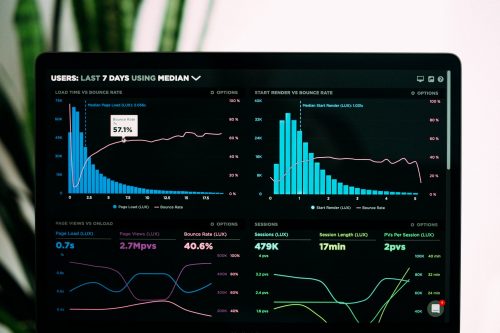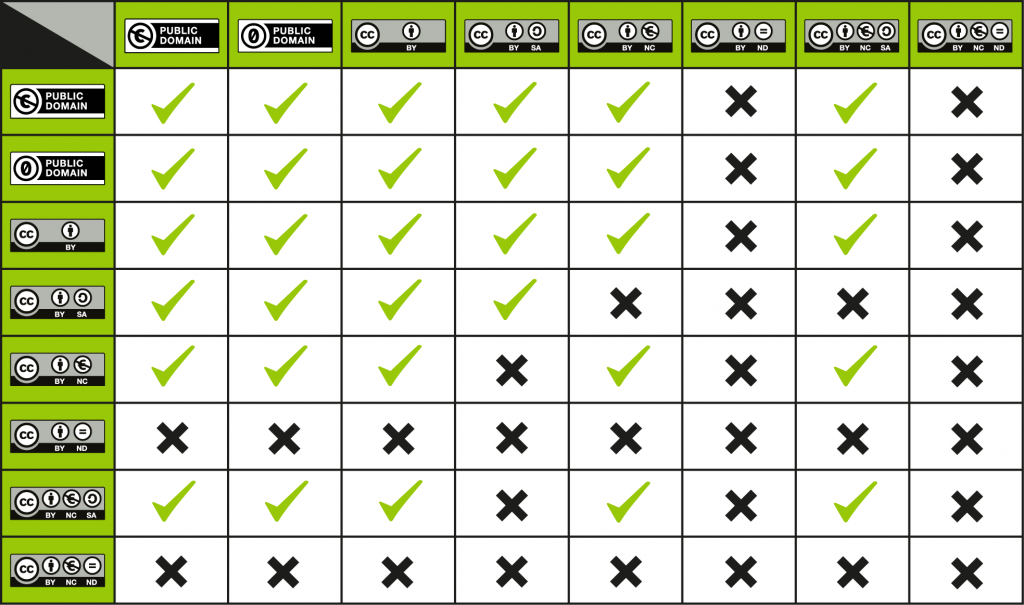1.2 Online Privacy
When was the last time you were asked to “Accept Cookies”? Probably today. The tracking of our digital lives through cookies, web analytics, social media platforms and employer apps is multiplying day-by-day. What are cookies, anyway? (Keep reading to find the answer!)

Privacy is a “hot-topic” that spans the realms of both our physical and digital lives; it is also incredibly complex and multifaceted. You may find it down-right elusive. This is often because what one person considers private information, another may willingly share with a large circle of friends or even strangers; particularly on social media.
While digital information-sharing provides countless opportunities for community-building, collaboration and education, the broad disclosure of personal information can have potentially damaging effects. At the very least, indiscriminate personal information-sharing may increase the circulation of email spam. More seriously, comprehensive exchanges of information may cause some individuals loss of critical health, employment, educational, or financial benefits. At its most damaging, publication of personal information on the Internet can, and has, stigmatized vulnerable individuals, tarnished or destroyed reputations, terminated careers and even caused some people the loss of their jobs, family or identity.
In British Columbia, there are two primary information privacy laws: the Freedom of Information and Protection of Privacy Act (FIPPA) and the Personal Information Protection Act (PIPA). These laws set out the minimum standards that employers, employees and service providers (including College instructors) must follow to prevent unreasonable, unnecessary or unsafe sharing of personal information belonging to staff, clients, customers and the general public. BC has some of the strongest personal privacy laws in Canada and arguably one of the best in the world, alongside Great Britain, Australia and New Zealand.
Clearly, protecting privacy is a serious issue and should be considered carefully by individuals, groups and organizations planning to use digital technology with the capacity for widespread distribution or storage of personal information. With this in mind, governments across Canada over the last decade have introduced and revised information privacy laws to ensure enhanced protection of personal information.
Knowing why privacy is important and how to protect yourself are the best possible tools for preventing privacy breaches. As Edward Snowden puts it: “Without privacy you don’t have anything for yourself.”
Specifically in the context of maintaining an online presence, there are two main privacy concerns: “transactional” privacy and content ownership business owners must consider.
Transactional Privacy
“Transactional” privacy is the privacy of meta data that identifies individuals or their computers (e.g. IP addresses) and what they access online, when, for how long and with whom. Meta data refers to data that is captured through information exchanges when a user is browsing the internet, including any tab or window that is open, logged into an online application, submitting a form, purchasing a product, etc. In our context, we are purely interested in electronic transactional data that is financial, logistical, or time-measurable, which can pertain to certain individuals whether that person has consented to the distribution and aggregation of their data, or not. This type of information is typically kept in cookies that are requested and downloaded from websites onto your computer then shared with websites or web apps that you visit. In order to protect your privacy, it is best to Manage Cookie options every opportunity you get! For those sites, where there are many mulitple aggressive ads

A few examples of this are:
- Netflix remembers where you last stopped watching a particular show/movie.
- Amazon remembers what you had in your cart the last time you logged in.
- Facebook remembers your login information so that you don’t need to login in every time you visit the website.
When a particular site has Google Analytics installed a lot of information is shared with a website host. For example: an individual’s MAC (media access control) address, IP (internet protocol) address, any information Google can ascertain from your Google profile (when you are logged in or have saved login information on a particular site), etc.
We must all decide what personally identifiable data applications and servers can access while we are browsing the Internet. And we can do this either intentionally or passively. For example, creating alias email accounts to sign up for new services, rather than using your main everyday email address. In addition, enabling a cookie notification extension on your browser to block websites with questionable tracking tactics.
Particular attention needs to be paid if you are using a software application that is hosted and managed in the US. Firms in the US buy digital information for sale at auctions. Large multi-national organizations such as Google, Meta, which owns Facebook, Instragram and WhatsApp, SnapChat, FourSquare and Twitter are all based in the US. These companies broker and auction transactional information to advertisers to help strategically control their respective markets.
As we move through the social media component of this course, you will learn more about how much businesses know about customers to target advertisements. When you use social media or many other website services (e.g. WordPress.com), you consent to the terms and conditions of a privacy policy for that given company. In some cases, you will be asked to click a checkbox agreeing that you have read the conditions outlining how that specific company will (or won’t) protect your privacy. This ‘privacy through policy’ system leaves users vulnerable as many people do not take the time to read through the conditions and simply click agree. This can lead to the sale of personal information by companies, often without a user’s awareness.
Read Terms of Service; Didn’t Read[1] to see how individuals’ rights are being affected by the top online web applications through the storing and sharing of transational data. Yes, Google, YouTube and Facebook are all listed.
Content Ownership
Content ownership is concerned with the privacy of an individual’s words, views, opinions, images, relationships, exchanges or reviews online.
| Source | Transactional | Content |
|---|---|---|
| Static Website (no database capabilities) |
Content is copyrighted by author/business, unless otherwise stated. (i.e. wikicommons) | |
| Dynamic Website |
Cookies, Web Analytics | Content is copyrighted by author/business, unless otherwise stated. (i.e. ToS;DR) |
| Facebook & Instagram (Meta Inc.) |
Cookies, usage data tracked, data shared with third-parties under “terms of service” | Content is copyrighted by creator, however, owned by Meta Inc. |
| GMail, Google Drive, Docs (Alphabet Inc.) |
Usage data tracked | Content is copyrighted and owned by creator |
| Employer tracking apps |
GPS (location), screen captures, check-in/out, attendance, etc. | How content is copyrighted depends on an employees contract. |
By default, copyright is provided to the author(s) or organization of the documents creator, according to the laws of the country from which they operate. Some companies such as Meta, apply their own licensing onto the content published on their site. This is agreed to in the Terms of Service when users create their accounts.
In the case of Facebook and many other similar platforms, they do not grant themselves full property rights over your content, but they do claim royalty-free redistribution rights and they are absolved of any copyright infringement claims that might occur from others copying your content from them.
Copyright
Copyright is provided, by default, as soon as a work is created. It provides security and protection for an original literary, musical, dramatical or artistic work. The author has the right to prevent others from reproducing or copying the work. A work is by default copyrighted once is has been created and fixed in material form. (Canadian Intellectual Property Office, n.d.) [2]
Students at Camosun College, for example, should follow the Copyright guide for Camosun College students. Paying particular attention to the idea of fair dealing
Fair Dealing
In fact, fair dealing is applicable for everyone according to the Copyright Art 8 purposes. The Fair Dealing Decision Tool, created by the Councils of Ministers of Education can help you determine if you are able to adapt or copy another’s work
The Supreme Court of Canada outlined six factors to help determine if a particular use (or “dealing”) of a copyright-protected work is fair:
- Purpose
- Is the use one of the eight purposes permitted under fair dealing (education, research, private study, criticism, review, news reporting, parody, or satire)? If so, it is more likely to be considered fair.
- Character
- How is the work being used? Is the work being widely distributed?
- If a single copy is used for a permitted purpose, it is more likely to be considered fair.
- Amount
- How much of the work is being copied?
- If the amount copied is trivial, the use is more likely to be considered fair. However, it may be possible to deal fairly with an entire work. For example, there may be no other way to criticize or review a photograph or research journal article, unless the whole work is copied.
- Nature of the work
- Was the work previously published?
- If the work is unpublished or confidential, the use is less likely to be considered fair. However, a court of law may also consider whether the copy serves a public interest.
- Available alternative
- Is there a suitable alternative to the work that is not protected by copyright? If so, the use is less likely to be considered fair.
- Effect
- Is the copy likely to compete with the market of the original? If so, the use is less likely to be considered fair.
Note: A use does not need to satisfy all of these factors do be considered fair.
Copied and adapted from Copyright for Students from Langara College under a Creative Commons Attribution-ShareAlike 4.0 International License.
Licensing
Many types of licensing exist for all digital mediums that allow the copying and reproduction of an original work of writing or art. For example, in BC, educators can use the Fair Dealings Policy[3] to upload and create copies of up to 10% of a copyright-protected work for their courses.
Creative Commons
“Our licenses enable collaboration, growth, and generosity in a variety of media” (Creative Commons, n.d.)[4]
Watch this excellent introductory video created by Creative Commons and licensed under CC Attribution-ShareAlike 4.0. While watching consider what you can share in this open community?
Made with Creative Commons: A book on open business models from Creative Commons on Vimeo.
Key words here are accessible, equitable, usable and shareable.
There are many ways sharing content can be good for business. Creative commons licenses all include attribution, take a look at Figure 1.2, a compatibility chart which references the licenses and their adaptability “remixing”.
Figure 1.2

Reflect on the use-cases for distributing content and media using Creative Commons licensing in a business environment. Read the article Beyond Copyright: the Ethics of Open Sharing by Josie Fraser[5] paying close attention to the section: Recommendations for ethical, open practice.
Write a paragraph that outlines a digital access policy for your (hypothetical) business, one you might consider using in your course project. The business can be similar to a type of business you have worked-in previously or in a field you have expertise/interest. Write about the type of licenses that will be used to share or restrict the sharing of content created by the business. Consider the business’ employees as the audience when choosing how to write this. Include sufficient justification for your policy.
Media Attributions
- There is no privacy on Facebook
- CC_License_Compatibility_Chart © Creative Commons is licensed under a CC BY (Attribution) license
- ToS;DR. Terms of Service. Didn't Read. https://tosdr.org/ ↵
- Canadian Intellectual Property Office. (n.d.). A guide to copyright. https://www.ic.gc.ca/eic/site/cipointernet-internetopic.nsf/eng/h_wr02281.html ↵
- Camosun College. (2022, August 18). Copyright guide for Camosun College. https://camosun.libguides.com/copyright ↵
- Creative Commons. (n.d.) . Share your work. https://creativecommons.org/share-your-work/ ↵
- Fraser. J. (5 November, 2021). Beyond copyright; the ethics of open sharing. https://medium.com/creative-commons-we-like-to-share/beyond-copyright-the-ethics-of-open-sharing-a495bb95569d ↵

